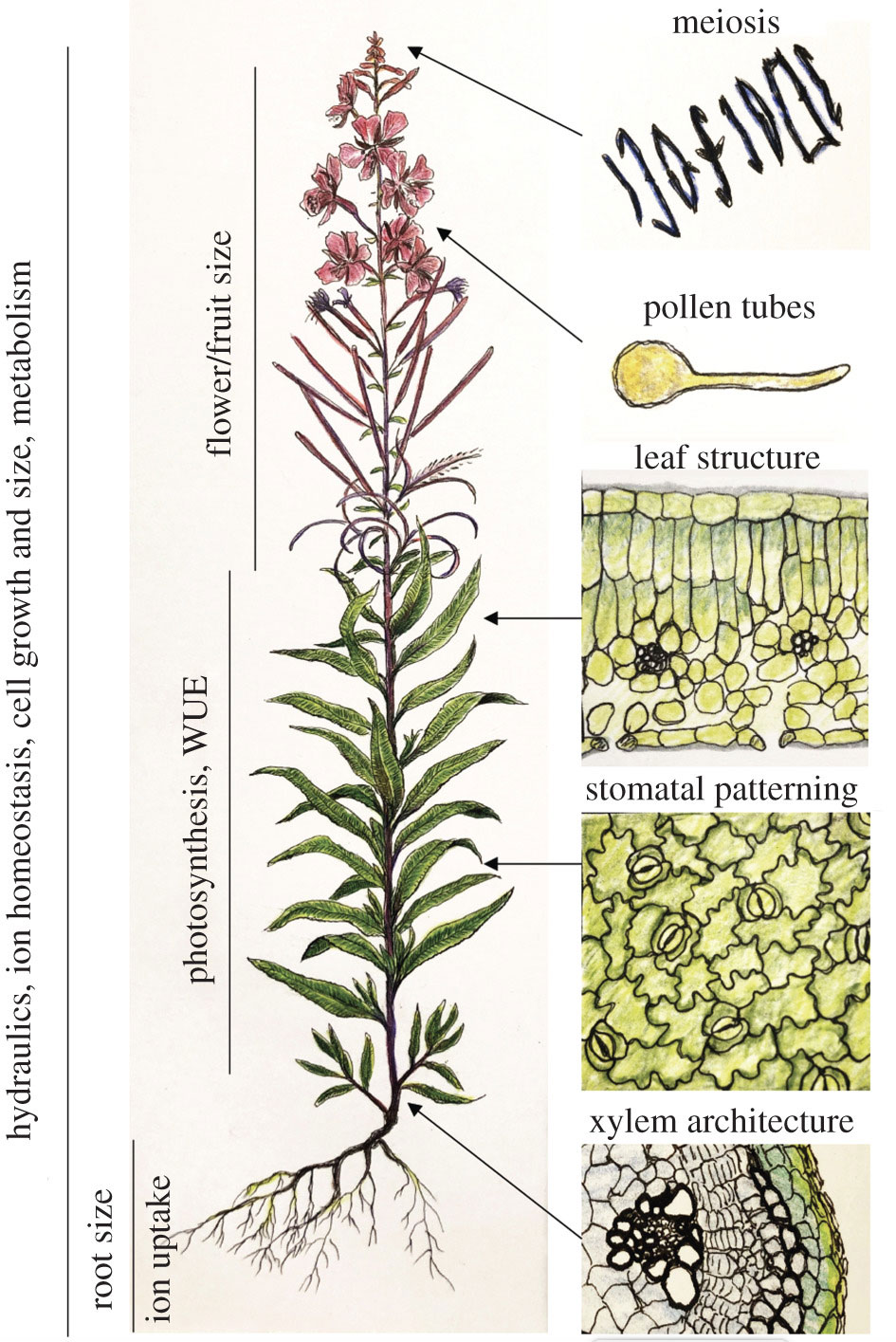When everything changes at once: finding a new normal after genome duplication
Genome duplication results in substantial changes to the cell biology and physiology of plants. One of the most common changes in neopolyploids is an increase in cell size. This has important implications for growth, fitness and stress resilience in neopolyploids. But is an increase in cell size a challenge or an opportunity? This literature review suggests that probably both are true, and discusses how polyploids can evolve a “new normal” through extensive physiological retuning.
Abstract

Whole-genome duplication (WGD), which leads to polyploidy, is implicated in adaptation and speciation. But what are the immediate effects of WGD and how do newly polyploid lineages adapt to them? With many studies of new and evolved polyploids now available, along with studies of genes under selection in polyploids, we are in an increasingly good position to understand how polyploidy generates novelty. Here, I will review consistent effects of WGD on the biology of plants, such as an increase in cell size, increased stress tolerance and more. I will discuss how a change in something as fundamental as cell size can challenge the function of some cell types in particular. I will also discuss what we have learned about the short- to medium-term evolutionary response to WGD. It is now clear that some of this evolutionary response may ‘lock in’ traits that happen to be beneficial, while in other cases, it might be more of an ‘emergency response’ to work around physiological changes that are either deleterious, or cannot be undone in the polyploid context. Yet, other traits may return rapidly to a diploid-like state. Polyploids may, by re-jigging many inter-related processes, find a new, conditionally adaptive, normal.
Link to the paper in external page The Royal Society